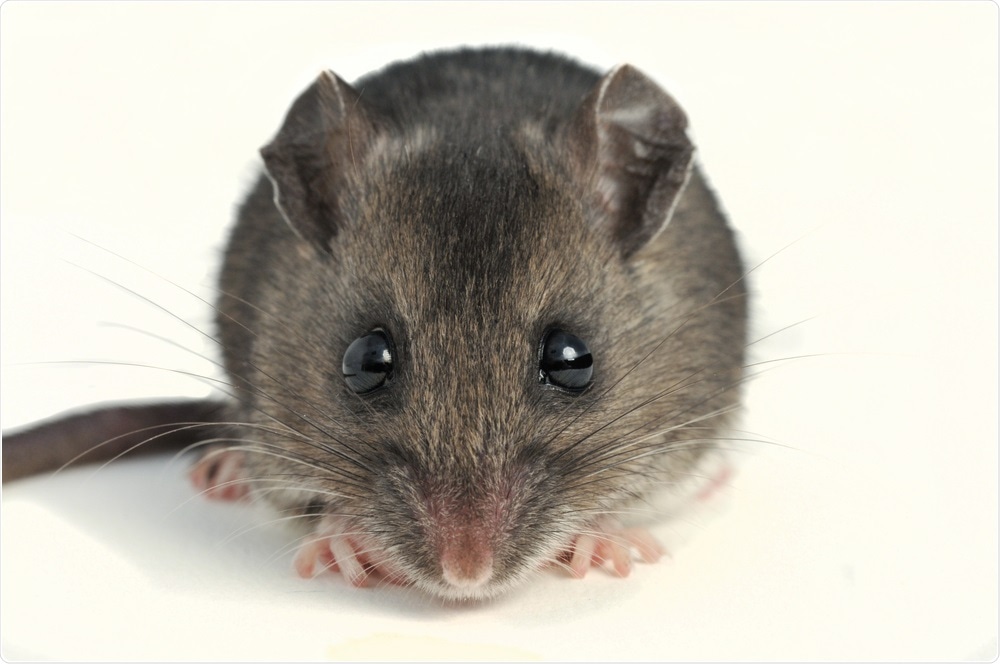A new study, conducted in Canada and recently published in Nature Communications, reports that the North American deer mouse can be infected with the severe acute respiratory syndrome coronavirus 2 (SARS-CoV-2) from humans. This finding, therefore, confirms a plausible risk of reverse zoonosis, on which data is presently unavailable.
 Study: SARS-CoV-2 infection and transmission in the North American deer mouse. Image Credit: Close Encounters Photo / Shutterstock.com
Study: SARS-CoV-2 infection and transmission in the North American deer mouse. Image Credit: Close Encounters Photo / Shutterstock.com
An overview of SARS-CoV-2
SARS-CoV-2, which is the virus responsible for the coronavirus disease 2019 (COVID-19), can be transmitted by infected individuals who may be presymptomatic, asymptomatic, mildly symptomatic, or symptomatic. The emergence of SARS-CoV-2 in Wuhan, China in December 2019 has been presumed to be the result of zoonotic spillover from an animal reservoir. More specifically, researchers believe that the virus originated in the horseshoe bat of the genus Rhinolophus and had an intermediary host before it ultimately reached humans.
As of June 22, 2021, SARS-CoV-2 has infected over 178 million individuals and caused almost 3.9 million deaths worldwide. While mitigation efforts including isolation, social distancing, lockdowns, and vaccinations to control the pandemic are ongoing, several concerns on the potential for reverse zoonosis have been raised. Reverse zoonosis refers to the human-to-animal transmission of SARS-CoV-2 into susceptible wild animal host species.
What animals are affected by SARS-CoV-2?
The amino acid sequences of the SARS-CoV-2 receptor angiotensin-converting enzyme 2 (ACE2) from various vertebrate species indicate the possibility that this virus could infect additional wild animal species. Experimental studies on SARS-CoV-2 transmission in tree shrews, hamsters, ferrets, fruit bats, rhesus macaques, cynomolgus macaques, marmosets, African green monkeys, hamsters, and domestic cats, as well as documented instances of unintentional human-to-animal transmission in tigers, mink, cats, and dogs, have been reported.
“Widespread circulation of SARS-CoV-2 in humans has raised concerns about the theoretical risk of reverse zoonosis events with wildlife, potentially seeding new host reservoir species and geographic regions in which SARS-CoV-like coronaviruses have not historically been endemic.”
In a recent study published in Nature Communications, researchers report that adult North American deer mice are susceptible to experimental infection with a human isolate of SARS-CoV-2. This infection was found to induce viral replication in the upper and lower respiratory tracts of deer mice with little or no signs of disease.
The researchers also demonstrated that these infected deer mice are capable of transmitting SARS-CoV-2 to other naive deer mice via direct contact when they are housed together. They also observed heavy viral shedding and reported a high propensity for direct contact transmission.
SARS-CoV-2 in deer mice
The deer mice (Peromyscus maniculatus) are members of the Cricetidae family of rodents and are closely related to the SARS-CoV-2-susceptible Syrian hamsters (Mesocricetus auratus). These deer mice are widely distributed across North America.
Deer mice are known to be susceptible to persistent infections. Furthermore, these mice are natural host reservoirs for several known and emerging zoonotic pathogens that spill over into humans including Borrelia burgdorferi, deer tick virus (DTV), and Sin Nombre orthohantavirus (SNV). As a result of these risk factors, the researchers looked at the SARS-CoV-2 infection and its transmission in deer mice.
Upon examining the ACE2 receptors in the deer mouse for congruence with human ACE2 (hACE2), the researchers concluded that deer mice are likely to be susceptible to SARS-CoV-2. An additional observation recorded by the researchers included that the amino acid differences were unlikely to have a detrimental effect on spike protein binding efficiency.
The researchers performed detailed blood biochemistry, histopathology, and virus distribution studies to test the SARS-CoV-2 infection of adult deer mice. They also tested for the transmission of SARS-CoV-2 between SARS-CoV-2-infected and naïve deer mice via direct contact. The viral ribonucleic acid (RNA) content in the oropharyngeal and rectal swab samples, nasal washes, nasal turbinates, as well as in the lungs of the mice were evaluated. Seroconversion of SARS-CoV-2 was also observed.
“The findings reported here suggest that the impacts of SARS-CoV-2 on infected Peromyscus species rodents are likely to be minimal; however, wild deer mouse populations may be more or less susceptible to infection than the experimentally housed animals we have described.”
Study takeaways
The experiments from this study demonstrate that adult deer mice are susceptible to experimental infection with a human isolate of SARS-CoV-2. Despite a high viral burden and elevated levels of inflammatory cytokines in the lungs and seroconversion, the researchers observed only asymptomatic infection or mild disease with lesions that were limited to mild lung pathology.
However, the possibility of novel pathogens such as the SARS-CoV-2 being introduced into susceptible wildlife may have devastating consequences. The risk of transmission of SARS-CoV-2 back to humans may also exacerbate the current pandemic.
The researchers point out that the actual risk of human-to-deer mouse transmission is unclear. Furthermore, there remains a lack of understanding as to how the transmission studies discussed here translate to the risk of sustained transmission among the wild deer mice populations.
Overall, the researchers suggest that the deer mouse model of SARS-CoV-2 infection, as a largely outbred small animal model, may prove useful for studying viral pathogenesis, particularly when looking to identify determinants of asymptomatic infection, viral persistence, and transmission, and for evaluating the protective efficacy of experimental vaccines and therapeutics.